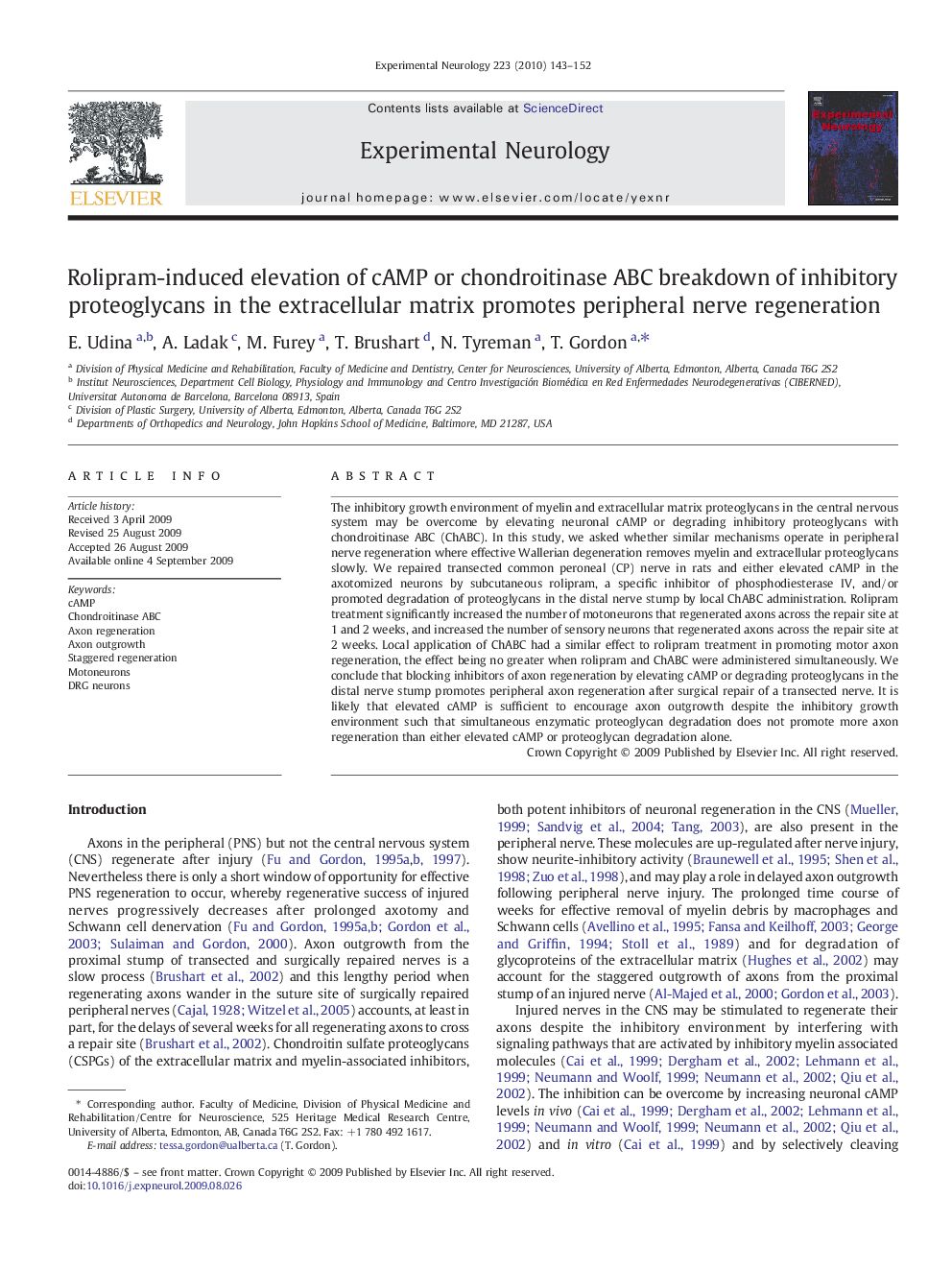| Article ID | Journal | Published Year | Pages | File Type |
|---|---|---|---|---|
| 6019369 | Experimental Neurology | 2010 | 10 Pages |
The inhibitory growth environment of myelin and extracellular matrix proteoglycans in the central nervous system may be overcome by elevating neuronal cAMP or degrading inhibitory proteoglycans with chondroitinase ABC (ChABC). In this study, we asked whether similar mechanisms operate in peripheral nerve regeneration where effective Wallerian degeneration removes myelin and extracellular proteoglycans slowly. We repaired transected common peroneal (CP) nerve in rats and either elevated cAMP in the axotomized neurons by subcutaneous rolipram, a specific inhibitor of phosphodiesterase IV, and/or promoted degradation of proteoglycans in the distal nerve stump by local ChABC administration. Rolipram treatment significantly increased the number of motoneurons that regenerated axons across the repair site at 1 and 2 weeks, and increased the number of sensory neurons that regenerated axons across the repair site at 2 weeks. Local application of ChABC had a similar effect to rolipram treatment in promoting motor axon regeneration, the effect being no greater when rolipram and ChABC were administered simultaneously. We conclude that blocking inhibitors of axon regeneration by elevating cAMP or degrading proteoglycans in the distal nerve stump promotes peripheral axon regeneration after surgical repair of a transected nerve. It is likely that elevated cAMP is sufficient to encourage axon outgrowth despite the inhibitory growth environment such that simultaneous enzymatic proteoglycan degradation does not promote more axon regeneration than either elevated cAMP or proteoglycan degradation alone.
